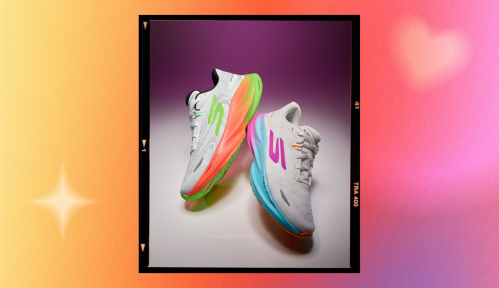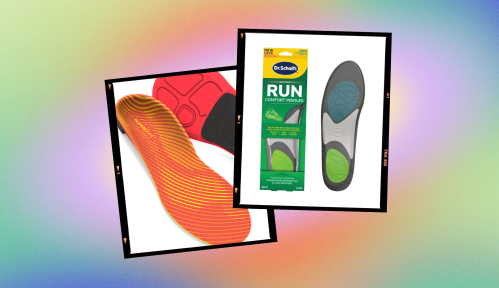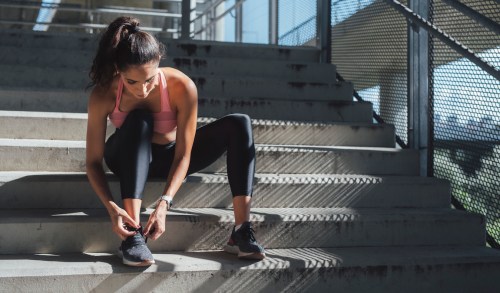Our editors independently select these products. Making a purchase through our links may earn Well+Good a commission
6 of the Best Running Shoes To Take You From the Road to the Trail, Tested and Expert-Approved
These expert-recommended (and runner-approved) kicks can keep up comfortably on both concrete and dirt.
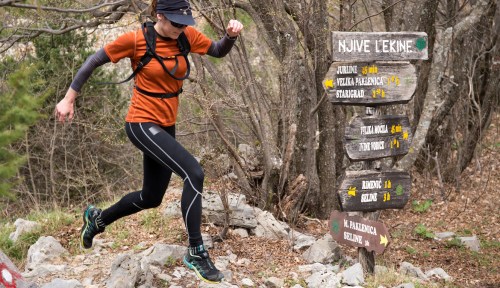
Recently moving from New York City to North Carolina somewhat accidentally landed me in a runner’s dream scenario: Within a mile of my house I have access to miles upon miles of gorgeous forested running trails. On that one mile of road to and from the trail, though? The clunky feeling of running on a hard surface in my hard trail shoe almost made me want to just drive to the trailhead. But since both my carbon emissions guilt and lingering New Yorker habits won’t allow me to do that, I’ve opted for another, better alternative: Testing out some shoes in the growing category of hybrid shoes for both the road and trail (sometimes also called all-terrain or door-to-trail) shoes. Scroll on to explore some of the best road-to-trail running shoes that I and the W+G team have tried firsthand.
Experts in This Article
podiatrist specializing in sports medicine and certified running coach
director of footwear at Fleet Feet
Best road-to-trail shoes, at a glance
- Best cushioning: Hoka Challenger 7, $145
- Most all-around comfortable: Nike Pegasus Trail 5, $155
- Best for beginners: Altra Outroad 3, $130
- Most stylish: On Cloudvista 2, $150
- Best breathable: Alo Runner, $185
- Most versatile: Saucony Ride 15 Trail, $85
What to look for in a road-to-trail shoe
Up until now, I’ve mostly been a road runner, with an addiction to soft, super-cushioned running shoes. The few trail shoes I owned weren’t that—they’re usually quite hard because of their deep lugs—which didn’t bother me as long as I was running on forgiving dirt trails. So, I asked the pros what exactly I should look for in a road-to-trail shoe. Here's what they said:
A durable outsole with mid-size lugs
One of the biggest differences between a road shoe and a trail shoe is the outsole, since trails require both more durability and better grip. The bottom of a road shoe, for instance, is usually somewhat flat, with grooves that provide just enough grip for concrete or asphalt surfaces. A trail shoe, however, typically has a rubber outsole with lugs—sometimes quite large ones, up to around five mm—that look like knobs on a tire.
While lugs are key for avoiding slips on uneven, muddy terrain, they are also what can make landings on the road feel so hard, says Nick Krouse, who manages footwear at Fleet Feet. “You’ll actually hear each of those teeth as they come into contact with the road—the shoes can be really loud,” he says.
For a happy medium that provides sufficient grip without feeling you’re clunking down the street, look for the smaller lugs typically found in all-terrain shoes. You may also want to avoid trail shoes with rock plates, which are sometimes added for protection but can make the shoes extra heavy and hard, says Lee Firestone, DPM, a podiatrist and certified running coach.
“If you’re going to be running to the trail, you don’t want it to be too hard, and you don’t want the lugs to be too deep,” Dr. Firestone says. “It can set you up for things like stress fractures, and it’s just not going to be a comfortable ride getting to the trail.”
A more-protective upper
Look at a road shoe’s upper, and you’ll often see small holes intended to improve breathability. But if you’re going to be on the trails, those holes could welcome debris and dirt, says Krouse, so you’ll want to opt for a shoe with an upper that offers more coverage and protection.
Another protective element to look for: A bumper-like guard at the front of the shoe, which provides a layer of defense should you get snagged on a root, or hit a rock toe-first. “It stiffens up the front of the shoe just in case you happen to snag it on something, it won’t rip away your toenail,” Krouse says.
Cushioning and support
Dr. Firestone suggests looking for a shoe with a more cushioned midsole to make any miles you’re doing on the road feel less like you’re literally pounding pavement. “The other thing is, many of the trail shoes don’t have a lot of medial and lateral support to control pronation,” he says. “So if you’re somebody who is a pronator or has a really flat foot, you have to be careful.” Running on the road in a shoe without that support could lead to tendon injuries, he says, because unlike trails, “roads tend to be repetitive motion,” he says. “So repetitive motion and a shoe that doesn’t give you enough intrinsic support could set you up for some problems.” Shoes built for both the roads and the trails should have some of that medial and lateral support, he says.
I tested out several of these door-to-trail sneakers on all kinds of terrain, and also got input from both Dr. Firestone and Krouse based on each of their expertise. These picks rose to the top as the best options out there.
The best road-to-trail running shoes

Best cushioning: Hoka Challenger 7
$145
The all-terrain sister of the fan-favorite Hoka Clifton, the Challenger is one of Krouse’s top picks for a road-to-trail shoe, and is the one shoe in this list I could see myself reaching for even when I’m not planning on logging any trail miles. On the roads it felt light, responsive and cushiony—you could tell me I was wearing a snappy-but-cushiony road trainer and I’d believe you. But, with its four mm lugs and durabrasion rubber outsole, the Challenger felt plenty grippy and stable on the trails. My foot felt super secure, too, thanks in part to the extended heel tab, which helps both with getting the shoe on and with keeping the heel in place when navigating uneven, unpredictable terrain.
Editor's note: Soon, Hoka is rolling out the Challenger 8, which includes a new lug design and increased drop.
Hoka Challenger 7 specs:
Colors: 11 | Sizes: 5-12 | Weight: 7.7 oz | Lugs: 4 mm | Drop: 5 mm
Pros:
- Plush, cushioned feeling, even on roads
- Lightweight and responsive
- Secure and stable on trails
- Also comes in a waterproof version
Cons:
- Not designed for more technical trails
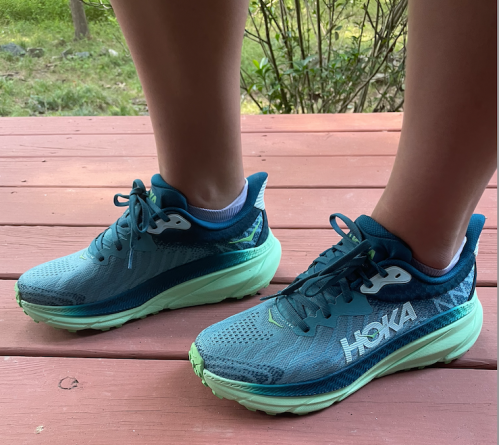
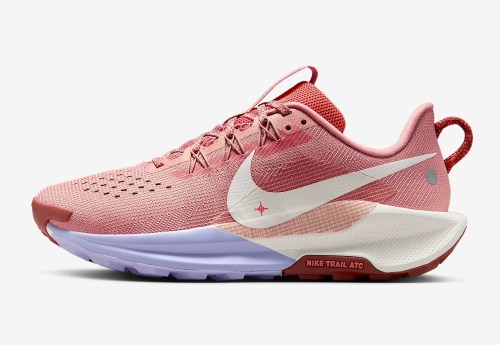
Most all-around comfortable: Nike Pegasus Trail 5
$155
The Nike Pegasus is a classic for a reason, and the trail version of the stalwart shoe is Dr. Firestone’s top pick for tackling both the roads and the trails. Though it’s called the Pegasus Trail, it’s a true all-terrain shoe—I found it light and springy on the roads and stable on the trails. Like its road counterpart, the Pegasus Trail doesn’t feel quite as cushiony as the shoes I typically favor, but I still found it super comfortable.
Nike Pegasus Trail 5 specs:
Colors: 4 (plus design-your-own option) | Sizes: 5-12 | Weight: 7.7 oz | Lugs: 4 mm | Drop: 10 mm
Pros:
- Highly comfortable
- Light, springy feeling on the roads and stable on the trails
Cons:
- Not suitable for more technical trails
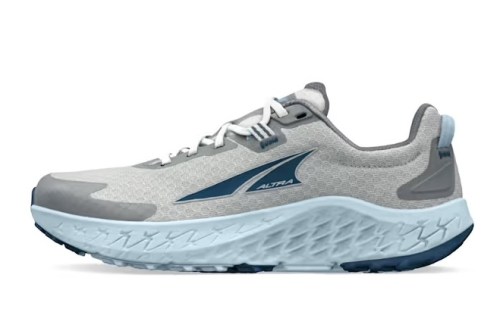
Best for beginners: Altra Outroad 3
$130
Altras may not be for everyone—they’re uniquely designed with zero heel-to-toe drop (meaning, your foot lies flat rather than slightly pointed down as in most shoes) and a wide, round toebox. But if you’re already a fan of Altras—especially the Rivera, the road version of this shoe—or are open to trying something different, the Altra Outroad is a solid, Krouse-approved road-to-trail option. Or in my case, road, trail, and beyond: I tested the Outroad on everything from packed dirt to sand to slippery wood to light rocky terrain, and it lived up to its name.
Altra says the shoe is built for the trail-curious road runner, and I agree: Its comfortable fit and smooth, nimble ride make it an excellent entry-level trail-and-more shoe.
Altra Outroad 3 specs:
Colors: 2 | Sizes: 5.5-12 | Weight: 8.7 oz | Heel-to-toe drop: 0
Pros:
- Highly versatile and comfortable
- Cushioned, smooth ride
- Built for the beginner trail runner
Cons:
- Not intended for more technical terrain
- Zero-drop won’t be for everyone
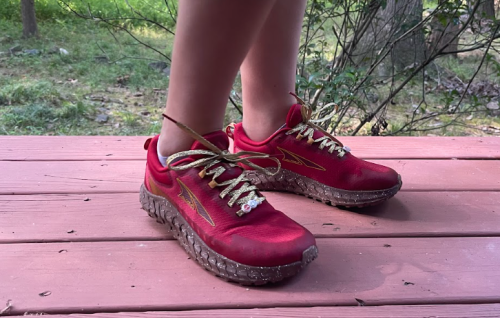
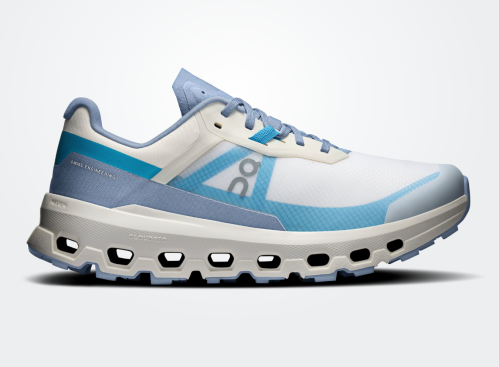
Most stylish: On Cloudvista 2
$150
Though On markets the Cloudvista as a trail shoe, it’s a true versatile road-to-trail option, says Krouse. Like many On shoes, the Cloudvista feels relatively firm on the roads. No clickety-clackety lugs or anything—more like the feeling of running in a firm but snappy road shoe. On the trails, the shoe becomes more forgiving, but still, it doesn’t have a ton of cushion, so probably not the best option for longer runs. But even as a cushion addict, I’ll still be reaching for the Cloudvista for those short-to-medium hybrid runs, which is a testament to the shoe’s comfort and smooth, stable ride. (And yes, it’s cool-looking, okay?)
On Cloudvista 2 specs:
Colors: 6 | Sizes: 5-11 | Weight: 10.2 oz | Drop: 6 mm
Pros:
- Comfortable and secure fit
- Snappy, smooth ride
- Durable and grippy outsole
- Stylish enough for everyday wear
Cons:
- Not for technical trails or longer distances
- Firmer ride on roads

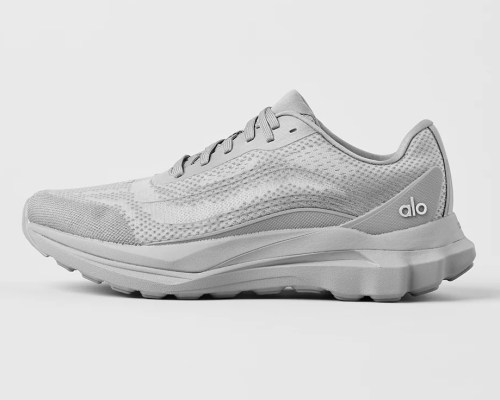
Best breathable: Alo Runner
$185
While Alo is a brand best known for aesthetics, don't sleep on these performance-ready all-terrain shoes. The Alo Runner utilizes recycled materials for a super breathable (yet durable) mesh upper. There's also a deep heel cup, dense midsole, and grippy lugs for traction.
W+G writer Natalie Arroyo Camacho put these kicks to the all-terrain test. She says, "On the trail and in the Georgia humidity, the breathability and traction of these shoes really shined. There was even a point where there was light rain for about 20 minutes and, while this definitely muddied my bright white shoes, I still felt secure enough in each step and didn’t slip once."
Alo Runner specs:
Sizes: 4.5-17 | Colors: 9 | Weight: N/A | Drop: 11mm
Pros:
- Extensive unisex size run
- Breathable mesh keeps your feet cool
- Lightweight
- Grippy pod-style lugs for traction
Cons:
- Priciest shoe on this list
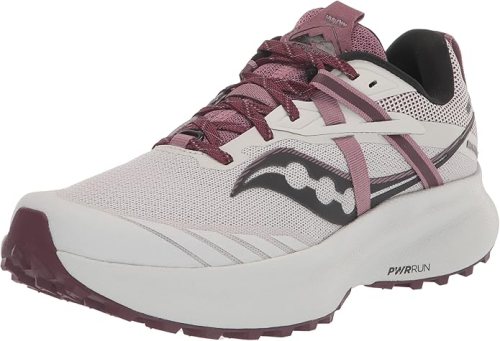
Most versatile: Saucony Ride 15 Trail
$85
Yet another fan-favorite road shoe with an all-terrain model, the Saucony Ride 15 Trail comes recommended by Krouse, and features a more protective, durable upper and a grippy outsole with 3.5 mm lugs. It’s one of the cushier options on this list, with a stack of Saucony’s soft, bouncy PWRRUN foam, and has the honor of being one of the rare trail shoes that tempted me to push the pace on the roads. Though it felt stable enough on light trails, I could see how on more rocky terrain it may not offer enough protection. Fit-wise, it felt snug, secure and comfortable, with enough flexibility to be versatile.
Saucony Ride Trail 15 specs:
Colors: 5 | Sizes: 5-12 | Weight: 8.5 oz | Lugs: 3.5 mm | Drop: 8 mm
Pros:
- Soft, bouncy feel underfoot
- Snug and comfortable fit
Cons:
- Color options aren’t great
- Not built for more technical terrain
Things to consider before buying
Though there’s an expanding number of road-to-trail options, Krouse says you may not find many at your local running store. “It’s a category that’s often overlooked,” he says. They also aren’t always clearly labeled or marketed as road-to-trail or all-terrain shoes, so do your research and ask an expert to help you find what you’re looking for. (And don’t buy anything without at least testing it on the roads, says Dr. Firestone—once you get them dirty on the trails, you may not be able to return them.)
Other factors to consider when buying all-terrain shoes: What kind of trails you’ll be running on (gravel? packed dirt? technical?) and how much of your hybrid runs will be on the road versus the trails (for instance, I might go with one of the more durable shoes on this list, since I’ll only be running those two miles on the road—someone who does half of their run on the road might make a different choice). And keep in mind, says Dr. Firestone, that the more you wear these shoes on the hard road, the quicker they’ll wear out.
Sign up for the Well+Good SHOP Newsletter
Get exclusive deals on wellness, beauty, fitness, and food products that have been hand-picked by our editors.
Got it, you've been added to our email list.
